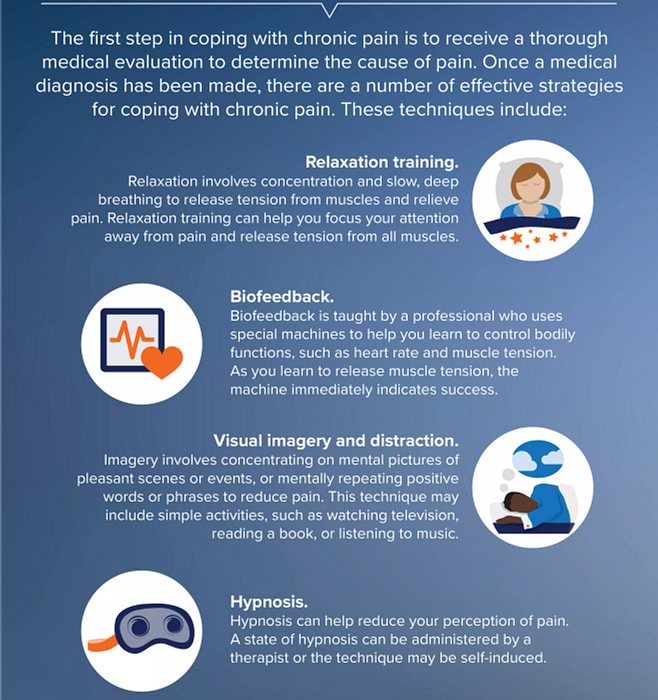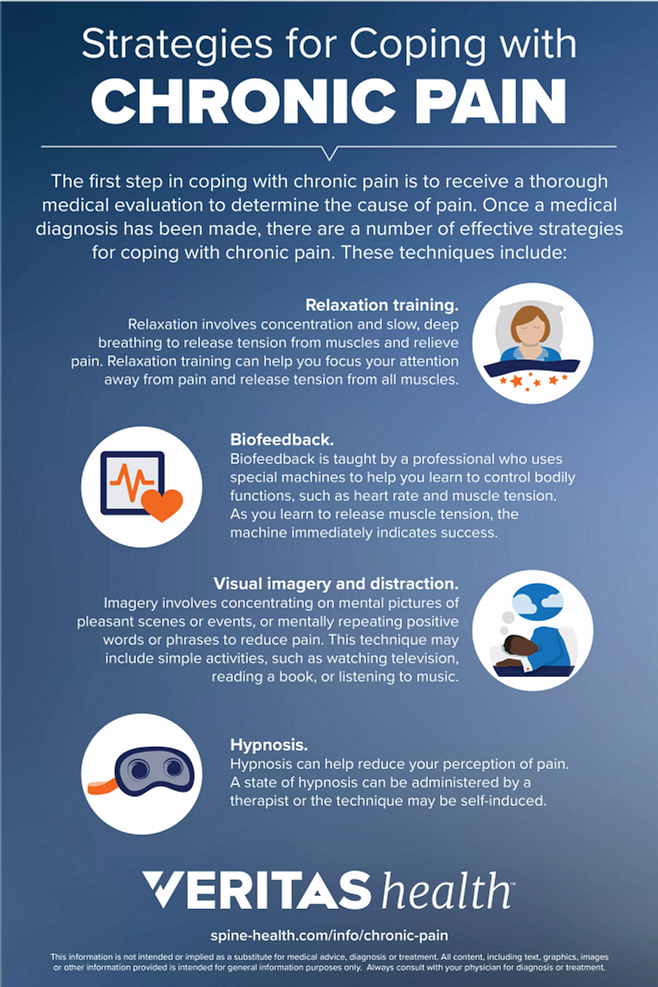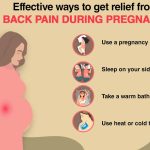Living with chronic pain can be an exhausting and debilitating experience. Whether it’s caused by an injury, illness, or underlying condition, finding effective pain relief techniques becomes a top priority. But can these techniques truly alleviate the persistent discomfort of chronic pain? In this article, we will explore the possibilities and dive into the world of pain relief for those enduring long-term discomfort.
When it comes to chronic pain, it often feels like an unwelcome guest that overstays its welcome. From dull aches to sharp stabs, it can take a toll on both physical and mental well-being. That’s why understanding the potential of pain relief techniques is crucial for those seeking relief. We will delve into various approaches, from traditional methods to alternative therapies, to discover what works best for managing chronic pain. So, if you’re tired of being held hostage by your pain, join us on this journey as we explore the possibilities and uncover the secrets of finding relief.
Can Pain Relief Techniques Be Used for Chronic Pain?
Chronic pain is a debilitating condition that affects millions of people worldwide. It can have a significant impact on daily life, making it difficult to perform simple tasks and enjoy activities. While there are various treatment options available, including medication and physical therapy, many individuals are turning to pain relief techniques as a complementary approach. These techniques aim to alleviate pain and improve overall well-being without relying solely on medication. But can pain relief techniques be used effectively for chronic pain? Let’s explore this topic further.
The Role of Pain Relief Techniques
Pain relief techniques encompass a wide range of practices that are designed to manage and reduce pain. They often involve a holistic approach, addressing not only the physical aspects of pain but also the emotional and psychological components. These techniques can be used alongside traditional medical treatments to enhance pain management and improve quality of life.
One commonly used pain relief technique is mindfulness meditation. This practice involves focusing one’s attention on the present moment, without judgment or attachment to thoughts and sensations. Studies have shown that mindfulness meditation can reduce pain intensity and improve coping mechanisms in individuals with chronic pain. It helps individuals develop a greater awareness of their body and the ability to respond to pain in a more adaptive way.
The Benefits of Mindfulness Meditation
Mindfulness meditation offers several benefits for individuals with chronic pain. Firstly, it promotes relaxation and stress reduction, which can indirectly alleviate pain. Chronic pain often leads to increased stress and tension in the body, which can exacerbate pain symptoms. Mindfulness meditation helps to counteract this by activating the body’s relaxation response and promoting a sense of calm.
Secondly, mindfulness meditation enhances self-awareness. It allows individuals to observe their pain without judgment, fostering a more compassionate and accepting attitude towards their condition. This shift in perspective can reduce the emotional distress often associated with chronic pain and improve overall well-being.
Additionally, mindfulness meditation can improve pain coping strategies. By cultivating present-moment awareness, individuals develop the ability to respond to pain in a more constructive way. Rather than getting caught up in negative thoughts and emotions, they can observe the pain with curiosity and non-reactivity, which can ultimately lead to a reduction in pain perception.
Other Pain Relief Techniques
While mindfulness meditation is a valuable pain relief technique, it is not the only option available. There are numerous other techniques that individuals with chronic pain can explore to find relief. These include:
1. Acupuncture
Acupuncture is an ancient Chinese practice that involves the insertion of thin needles into specific points on the body. It is believed to stimulate the body’s natural healing response and promote pain relief. Research has shown that acupuncture can be effective in treating various types of chronic pain, including back pain, osteoarthritis, and migraines.
2. Massage Therapy
Massage therapy involves the manipulation of soft tissues in the body to alleviate pain and promote relaxation. It can help reduce muscle tension, improve circulation, and release endorphins, which are natural pain-relieving chemicals. Massage therapy has been found to be beneficial for individuals with chronic pain conditions such as fibromyalgia and chronic low back pain.
3. Exercise and Physical Therapy
Regular exercise and physical therapy can play a crucial role in managing chronic pain. Exercise helps strengthen muscles, improve flexibility, and enhance overall physical functioning. Physical therapy, guided by a trained professional, can provide targeted exercises and techniques to alleviate pain and improve mobility.
4. Cognitive-Behavioral Therapy
Cognitive-behavioral therapy (CBT) is a form of psychotherapy that focuses on changing negative thought patterns and behaviors. It can be particularly helpful for individuals with chronic pain as it addresses the emotional and psychological aspects of pain. CBT can help individuals develop effective coping strategies, improve sleep, and reduce pain-related distress.
Conclusion
In conclusion, pain relief techniques can be valuable tools in managing chronic pain. Mindfulness meditation, acupuncture, massage therapy, exercise, physical therapy, and cognitive-behavioral therapy are just a few examples of techniques that can complement traditional medical treatments. These techniques offer various benefits, including relaxation, stress reduction, improved coping strategies, and enhanced overall well-being. If you are living with chronic pain, it may be worth exploring these techniques under the guidance of healthcare professionals to find a personalized approach that works best for you. Remember, managing chronic pain is a journey, and it often requires a multifaceted approach to achieve optimal results.
Key Takeaways: Can pain relief techniques be used for chronic pain?
- Pain relief techniques can be effective in managing chronic pain.
- Techniques like relaxation exercises and deep breathing can help reduce pain levels.
- Physical therapy and exercise can improve strength and flexibility, reducing chronic pain.
- Alternative therapies like acupuncture and massage may provide relief for some individuals.
- It’s important to consult with a healthcare professional to determine the best pain relief techniques for your specific condition.
Frequently Asked Questions
What are some pain relief techniques that can be used for chronic pain?
When it comes to managing chronic pain, there are several techniques that can provide relief and improve quality of life. One commonly used technique is medication, which can include over-the-counter pain relievers, prescription medications, or even topical creams. These medications work to reduce inflammation and block pain signals in the body.
In addition to medication, physical therapy is often recommended for chronic pain management. Through targeted exercises and stretches, physical therapy can help improve flexibility, strength, and range of motion, reducing pain and promoting healing. Other techniques such as acupuncture, massage therapy, and chiropractic care have also shown promise in providing relief for chronic pain sufferers.
How effective are pain relief techniques for chronic pain?
The effectiveness of pain relief techniques for chronic pain can vary depending on the individual and the specific technique being used. While some people may find significant relief from medication or physical therapy, others may need to explore a combination of different techniques to achieve the desired results.
It is important to work closely with healthcare professionals to develop an individualized pain management plan that addresses the unique needs and circumstances of each person. This may involve trying different techniques and adjusting the plan as needed to find the most effective combination of pain relief strategies.
Are there any natural pain relief techniques for chronic pain?
Yes, there are natural pain relief techniques that can be used for chronic pain. These techniques focus on holistic approaches to pain management and can include practices such as mindfulness meditation, yoga, and relaxation exercises. These techniques aim to reduce stress and promote relaxation, which can in turn help reduce pain levels.
In addition, certain natural supplements and herbs have been found to have pain-relieving properties. Examples include turmeric, ginger, and omega-3 fatty acids. It is important to consult with a healthcare professional before starting any natural pain relief techniques to ensure they are safe and appropriate for individual needs.
Can pain relief techniques completely eliminate chronic pain?
While pain relief techniques can help manage and reduce chronic pain, it is rare for them to completely eliminate the pain altogether. Chronic pain is often a complex condition that requires a multifaceted approach to treatment.
However, with the right combination of pain relief techniques, many individuals are able to experience significant improvements in their pain levels and overall quality of life. It is important to have realistic expectations and work closely with healthcare professionals to find the most effective strategies for managing chronic pain.
What should I consider when choosing pain relief techniques for chronic pain?
When choosing pain relief techniques for chronic pain, it is important to consider factors such as the underlying cause of the pain, individual preferences, and potential risks and benefits of each technique. It is also crucial to work closely with healthcare professionals who can provide guidance and monitoring throughout the pain management process.
Additionally, it may be helpful to try different techniques and evaluate their effectiveness over time. What works for one person may not work for another, so it is important to be open to exploring different options and adjusting the pain management plan as needed.
Managing chronic pain without drugs
Final Summary: Can Pain Relief Techniques Help with Chronic Pain?
After delving into the topic of whether pain relief techniques can be used for chronic pain, it is evident that these techniques can indeed be beneficial in managing and alleviating chronic pain. By employing various pain relief strategies such as medications, physical therapy, alternative therapies, and lifestyle modifications, individuals with chronic pain can experience improved quality of life and reduced discomfort. It is crucial to remember that each person’s experience with chronic pain is unique, and finding the right combination of techniques may require some trial and error.
In conclusion, the use of pain relief techniques offers hope for those suffering from chronic pain. Whether it’s through the use of medications to manage pain, engaging in physical therapy to improve mobility, or exploring alternative therapies like acupuncture or mindfulness, there are various options available to individuals seeking relief. By working closely with healthcare professionals and adopting a holistic approach to pain management, individuals can regain control over their lives and find effective ways to cope with and alleviate chronic pain. Remember, everyone deserves a life free from unnecessary suffering, and pain relief techniques can play a vital role in achieving that goal.




